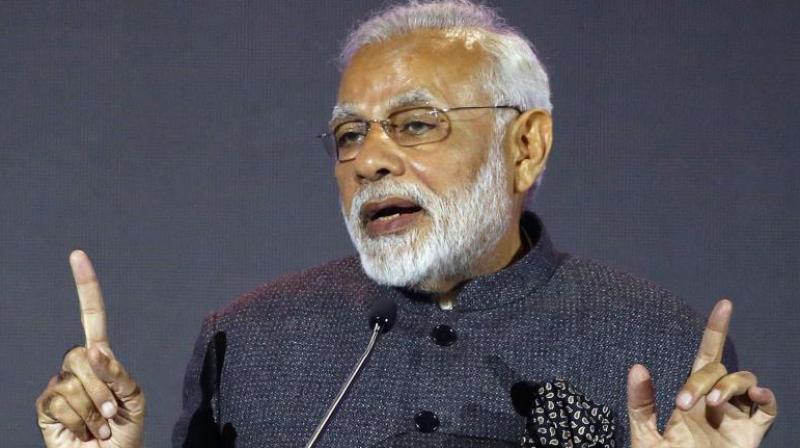India must be vigilant amid Asia power shift
Prime Minister Modi, escaping and keeping silent on the Indian capital choking under smog, had one meaningful success.

Attending the 15th Asean-India Summit as well as the East India Summit in Manila earlier this week, as Asean celebrated its golden jubilee and India commemorated 25 years of being its dialogue partner, Prime Minister Narendra Modi gave a fresh thrust to India’s “Act East” policy, which is basically the late P.V. Narasimha Rao’s “Look East” doctrine, suitably modified to neither fear offending China nor to hesitate to embrace the United States and its closest allies in the Asia-Pacific, now referred to as the “Indo-Pacific” region.
Essentially, besides the host of bilateral meetings that took place in the Philippines capital among the leaders present, the main events were the two summits.
The rise of China and its assertiveness under President Xi Jinping since his ascent in 2012 has provided new urge-ncy for all nations resisting China’s unilateral rewriting of history and international regimes to converge. In the backdrop of China resisting collective bargaining with the Asean bloc over its South China Sea island-building and annexation of maritime channels and airspace, Mr Modi has sought a “rules-based regional security architecture” that is best suited to the region’s interests and peaceful development.
Considering that India’s trade with Asean exceeds $60 billion a year and there are deep religious and cultural links with most member states, India’s soft power is a huge asset in balancing Chinese influence. It is hardly a coincidence that all the great rivers of South Asia and those traversing the Asean nations originate in the Tibetan plateau. Thus, Chinese actions to dam or divert their waters without considering the rights of lower riparian states would in future be yet a more critical shared concern. At the core of any Asian security architecture is Asean, with its 10 members. Unfortunately, they are more divided today than in recent history. China has been able to use Cambodia and Laos to stymie any collective pressure by Asean to compel rules-based conduct in the South China Sea, compliant with the UN Convention on the Law of the Sea. Terror-ism and Islamic fundamentalism create a clear divide between the Isla-mic and Buddhist members of Asean, which have simmering indepe-ndence movements like in the southern Phili-ppines and Thailand.
The East Asia summit originally included, bes-ides 10 Asean members, China, Japan and South Korea from East Asia, and India, Australia and New Zealand from the southern Indo-Pacific. It now also has the US and Russia as members. Its stated objective is to focus on energy, financial issues, global health and sustainable development and the environment. This year the focus has been more on countering radicalism, counter-terrorism and curbing terror financing, money laundering and the nuclear threat from North Korea. Mr Modi also used the forum to link the threat of terrorism to clandestine links between Pakistan and North Korea’s nuclear arms development. But the big elephant in the room was US President Don-ald Trump’s positioning of United States to “balance” China’s growing strategic and economic footprint. Regrettably, he appeared unprepared to push China to follow rules-based trading and maritime conduct, satisfied with $200 billion of trade deals, most alrea-dy in the works, that the Chinese proffered. Hegot a wishy-washy Chin-ese commitment to curb North Korea’s nuclear ambitions. Mr Trump’s decision to first skip the East Asia Summit and then agree to attend, but finally leave without doing so, on the grounds of a scheduling delay, left a denuded conference even more irrelevant. The Chinese and Russian Presidents had already played truant and sent their deputies.
Prime Minister Modi, escaping and keeping silent on the Indian capital choking under smog, had one meaningful success.
He followed up with bilateral meetings with the leaders of Australia, Japan and the US after the officials of all four nations met to resurrect a 10-year-old grouping called the “Quad”. When I led the Indian delegation at the 2007 meeting, China was still a rising but reluctant power. The fall of the Shinzo Abe government in Japan thereafter and the Labour Party’s victory in Australia, which under a Sinophile Prime Minister Kevin Rudd chose engagement over China balancing, led to the Quad’s premature demise. This sends an important signal to China that its conduct needs modifying or will meet resistance within the region.
Japan has in addition not allowed the Trans-Pacific Partnership dream to lapse despite the American withdrawal from it. A revived Quad becomes a rudimentary gathering of mainly democratic powers of the Indo-Pacific region to counter the emerging Chinese model of economic success laced with nationalism, but devoid of the political and civil rights of citizens. Surprisingly, only Canadian PM Justin Trudeau raised both the Rohingya issue and the abuse of human rights by the government of the Philippines in its anti-drug and counter-terror crusade. Even Quad members chose realpolitik over the defence of human rights.
The other major divisive issue is China’s Belt and Road Initiative. While its maritime component breaches the sovereignty of nations abutting the South China Sea, India objects to the inclusion of the China-Pakistan Economic Corridor (CPEC), traversing Gilgit-Baltistan, in its ambit. Both summits skirted the issue while emphasising connectivity as critical to economic integration. But mobilisation of resources for infrastructure development was called critical, without specifying the methodology.
The concern of India, Japan and the US over the lack of transparency in Chinese project finance that could build debt bubbles was unstated. The question lingers whether without assu-red American backing any China-balancing str-ategy can work, or a new Asian security order em-erge that is not China-dominated? India and Japan are exploring this by reviving the Quad-rilateral process. China had reacted angrily in 2007 at its birth. It will undoubtedly counter it much more actively now. India will need constant vigilance and deft diplomacy to steer thro-ugh this power redistribution in Asia.

